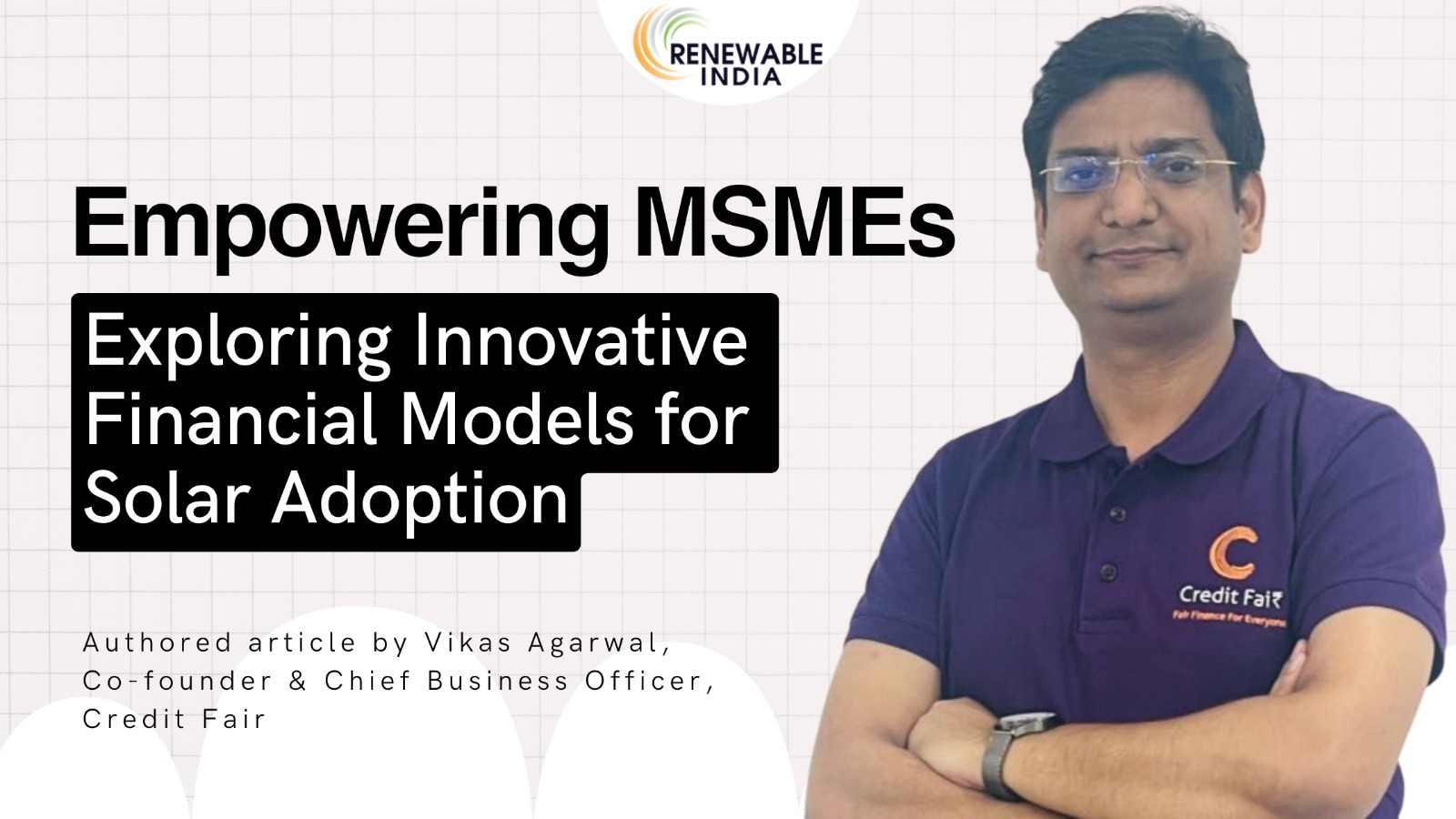
(Strap) New financial instruments are necessary to bring fragmented MSMEs under rooftop solar panels, which is imperative to meet India’s clean energy targets.
Beating all the odds, including the pandemic, that have been plaguing the country’s energy sector in the past couple of years, India is now on a better footing to achieve its renewable energy target of 500 gigawatts (GW) by 2030. Recently, Union Power and Renewable Energy Minister RK Singh said that the country will achieve its renewable energy targets well before the 2030 deadline. Elaborating on it, Renewable Energy Secretary Bhupinder Singh Bhalla said that in FY23 India added 15 GW of renewable energy, which would be increased to 25 GW in the current fiscal year and further to 40 GW in 2024-25. Mr Bhalla added that, from this year onwards, 50 GW of renewable energy projects would go for bidding annually. Apparently, it is a remarkable progress.
In India’s clean energy drive, solar energy assumes greater importance as it has the highest potential to produce renewable power compared to other sources of energy. However, India’s renewable energy target can’t be met fully without bringing the fragmented MSMEs into the rooftop solar network. Broadly, the rooftop solar segment consists of three categories — residential, commercial & industrial, and MSMEs. Among them, the commercial & industrial (C&I) consumers belong to the premium category. Naturally, a major part of the green funding will go to the category that has the scope of developing larger and profitable solar projects. Residential consumers come next in line. Only MSMEs with good credit history and sound balance sheets can expect financial support from funding agencies. The rest of them will be out of the game.
Industry estimates show that the market for C&I customers is nearing saturation and the residential market, which is smaller in individual project size, is gaining gradual momentum due to the mandatory government rules (that make rooftop solar installation compulsory for larger houses). However, a significant part of the MSME market — especially the micro and small units — still remains untapped for their rooftop solar potential for a host of reasons.
Currently, the MSME funding runs into many hurdles. In terms of creditworthiness, profitability and project size, MSME rooftop solar project is largely considered unviable for Opex model funding. Only the Capex model works here. The Opex is best suited to larger industrial clusters. While raising funds for Capex, MSMEs face multiple challenges like stringent collateral requirements, credit history checks, time-consuming documentation and delayed loan processing. Another discouraging factor is the reluctance of industrial units to invest in non-core businesses that demand further monitoring or hand-holding. In many cases, MSMEs found it difficult to meet collateral requirements as their plant and machinery were already committed to other term loans, finds a FICCI-Deloitte study.
So, the demands of the MSMEs should be taken into account while designing incentive schemes to promote rooftop solar adoption. Also, it makes sense to constitute a dedicated credit line for the weaker micro units that entirely depend on collateral-free loans. Innovative fundraising models such as green banks, green bonds, infrastructure bonds, and crowdfunding can be employed to raise capital, in addition to the government incentives like capital subsidy and interest subvention scheme.
In fact, the MSMEs have the strong potential to unleash the next phase of growth in the rooftop solar segment. But there are several policy bottlenecks, too, which hamper the growth of rooftop solar business in India. Inconsistent net metering policies across the states are a major hurdle, says a recent study by JMK Research & Analytics and Institute for Energy Economics and Financial Analysis (IEEFA). Net metering is a mechanism of selling power generated from the private renewable sources to the state electricity grid.
Many state-owned power utilities are not very supportive of promoting power generation by private players as it may lead to losing their monopoly in the market. However, the Centre’s ‘Green Energy Open Access Rules, 2022’ to promote green energy generation, purchase and consumption has changed the scenario considerably. Now, the sector regulators are introducing innovative models like virtual net metering (VNM) and peer-to-peer (P2P) power trading to make the projects financially viable.
VNM is an innovative arrangement that allows power generators to allocate their excess energy units to other entities they own. This system enables setting up of large solar plants under joint ownership either on-site or off-site. Since a billing software is used for measuring energy units, single power generation can be mapped to multiple consumers. Thus, VNM expands the scope of net metering benefits to a wide range of consumers. In P2P trading, consumers can trade excess solar power within a power distribution company’s jurisdiction.
The MSMEs have a crucial role in reducing greenhouse gas emissions and contributing to the country’s clean energy goals, says another Deloitte-CIF study (2019). The sector is one of the key pillars of the Indian economy, which contributes 29% to the GDP and employs 111 million people, according to the 2017-18 Annual Report of the Ministry of MSME. Moreover, the sector is one of the largest consumers of power, accounting for almost half of the total energy consumed in the industrial sector. The potential of the MSME solar energy market is estimated to be around 15GW, which is about 37% of India’s overall rooftop solar target of 40GW.
Traditionally, public sector banks have been dominant lenders to the MSME sector. However, in the past few years, the trend has changed and they have yielded significant ground to private lenders, NBFCs and fintechs. Another positive trend is the effective channelizing of global climate funds to domestic financial institutions, and the willingness of more and more lenders to grant collateral-free loans for rooftop solar projects. Undoubtedly, such developments lend weight to India’s efforts to achieve net zero emissions by 2070, which require a massive $15 trillion investment.
Leave a Reply